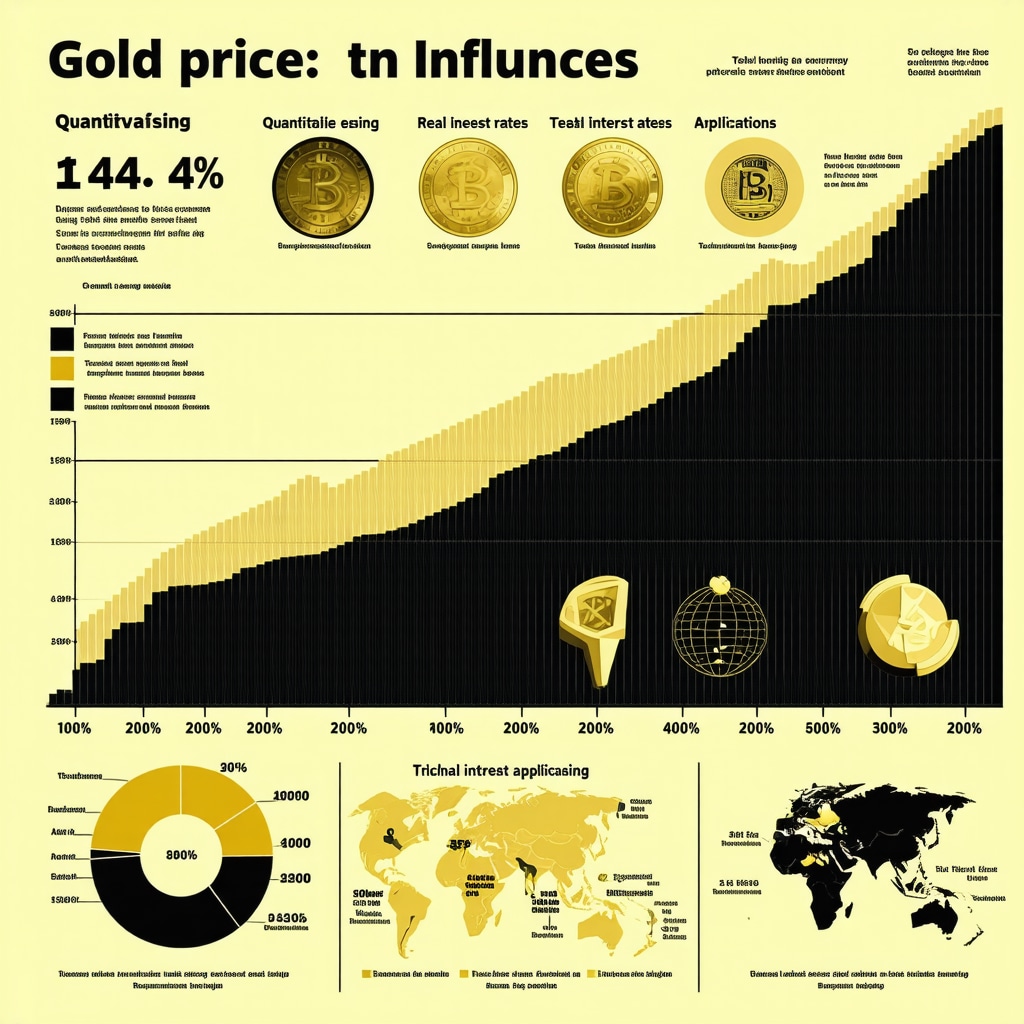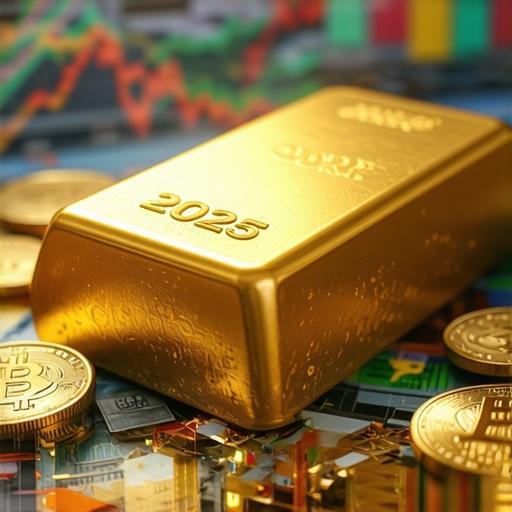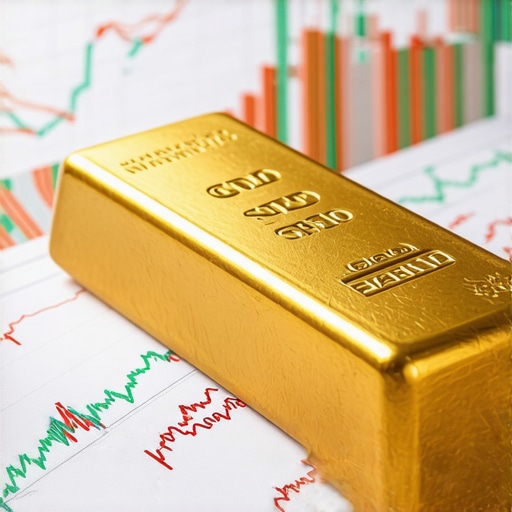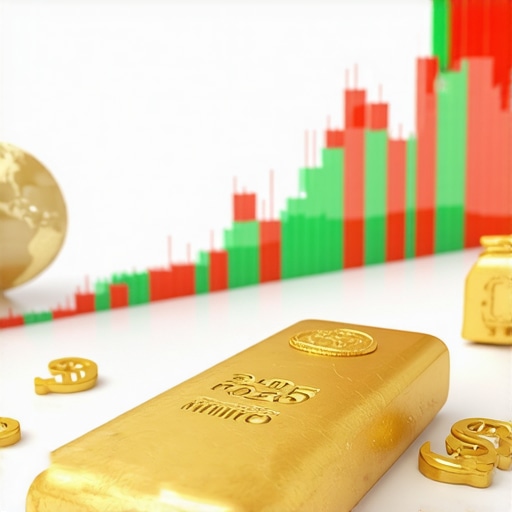Glittering Tales: Why Gold’s Global Demand Has Investors Hooked
Imagine a shimmering thread woven through centuries of human history, binding ancient civilizations to today’s savvy investors. That thread? Gold. But understanding global gold demand trends isn’t just about tracing a pretty metal’s journey; it’s about deciphering the heartbeat of markets and geopolitics. If you’ve ever pondered why gold prices seem to dance to their own rhythm, you’re in for a treat.
Gold Demand: More Than Just Bling
Gold’s allure transcends mere aesthetics. Central banks hoard it like dragons guarding treasure, emerging markets snap it up for cultural heft, and investors clutch it as a hedge against uncertainty. According to the World Gold Council, central banks increased their gold reserves by over 650 tonnes in 2023 alone, signaling a strategic pivot towards stability amid economic turbulence. This isn’t just shiny jewelry; it’s the world’s financial barometer.
Is Gold the Canary in the Economic Coal Mine?
When geopolitical tensions flare or inflation sneaks upward, gold often shines brightest. But why? Because it’s the ultimate safe haven. Unlike fiat currencies, which can be inflated into oblivion, gold’s supply is finite and its value enduring. This begs the question: should you be watching gold demand trends as closely as your portfolio’s ticker?
For investors eyeing strategic moves, understanding these demand fluctuations is crucial. The interplay between supply constraints, technological uses in electronics, and investment demand shapes price trajectories that savvy players can’t afford to ignore. If you’re keen on mastering this dynamic, exploring how economic shifts shape gold demand is a must.
Gold Demand in 2025 and Beyond: Navigating the Unpredictable
Looking ahead, expect demand to be a rollercoaster influenced by everything from emerging market consumption to central bank policies. The International Monetary Fund underscores that global uncertainties—like inflation fears and geopolitical risks—push investors toward gold as a safe store of value. But remember, no trend is set in stone; adaptability is king.
Wondering how to position yourself for these twists and turns? Delve into in-depth analyses of gold demand trends impacting 2025 prices to sharpen your edge.
Feel like sharing your take or curious about how gold fits into your investment puzzle? Drop a comment below or explore more on navigating gold market volatility, because in the gleaming world of gold, knowledge truly is wealth.
Supply Side Secrets: What Drives Gold Availability and Prices?
While demand often steals the spotlight, the supply side of gold is equally fascinating and impactful. Mining output, geopolitical stability in producing regions, and recycling rates all influence how much gold enters the market. For example, disruptions in major gold-producing countries can tighten supply chains, sending prices upward. Moreover, the cost of extraction and technological advances in mining can either encourage or discourage new production.
Investors should also consider the role of recycled gold. In times of high prices, recycling surges as consumers and industries sell off existing gold, adding to supply and potentially dampening price rises. This dynamic interplay between newly mined and recycled gold is a critical piece of the puzzle that shapes market movements.
How Do Central Banks’ Gold Policies Influence Market Stability and Investor Confidence?
Central banks remain pivotal players in the gold market, not just as hoarders but as active traders. Their decisions to buy or sell gold reserves signal confidence or concern about economic conditions. For instance, aggressive gold purchases by central banks often indicate hedging against currency devaluation or geopolitical risks, which can catalyze broader market shifts. Conversely, selling gold can reflect attempts to stabilize domestic currencies or finance government spending.
Understanding these policy moves helps investors anticipate market sentiment and price trends. The International Monetary Fund’s research on central bank gold purchases offers a rigorous analysis of these trends, underscoring their profound influence on global gold prices.
Investor Behavior in a Shifting Landscape: Diversification and Risk Management
In a world rife with economic uncertainty and geopolitical upheaval, investors increasingly turn to gold as a portfolio stabilizer. Its low correlation with traditional assets like stocks and bonds makes it an effective diversification tool. Moreover, gold’s role as an inflation hedge is backed by decades of historical data, making it a preferred choice during periods of rising consumer prices.
However, the methods of investing in gold vary widely—from physical bullion and coins to ETFs, mutual funds, and mining stocks. Each carries unique risks and rewards. For those interested in optimizing their gold allocation, exploring how to build a balanced gold portfolio with ETFs and stocks provides invaluable insights.
Could Emerging Technologies and Changing Consumer Preferences Reshape Gold Demand?
As the global economy evolves, so do the applications and desirability of gold. Beyond traditional uses, gold’s unique properties make it vital in cutting-edge technology sectors such as electronics, medical devices, and even sustainable energy solutions. For instance, demand for gold in electronic components might surge as 5G infrastructure expands.
Simultaneously, emerging consumer trends—like ethical sourcing and sustainable investing—could alter gold’s appeal. Investors and industry stakeholders must stay attuned to these shifts to anticipate future demand patterns accurately.
For a deeper dive into these trends and their investment implications, don’t miss our detailed exploration on exploring gold supply and demand dynamics.
What’s your perspective on gold’s evolving role in a rapidly changing investment world? Share your thoughts below or spread the word by sharing this article with fellow investors eager to navigate the glittering complexities of gold markets.
Unveiling the Subtle Forces: How Macroeconomic Indicators Shape Gold Demand Beyond the Obvious
While inflation and geopolitical instability are well-known catalysts for gold demand, a more nuanced understanding reveals that macroeconomic indicators such as real interest rates, currency strength, and global liquidity conditions exert profound influence on gold’s trajectory. For instance, declining real yields—adjusted for inflation—often correlate with increased gold purchases as the opportunity cost of holding non-yielding assets diminishes. This intricate dance between monetary policy and gold demand underscores why investors must monitor central bank rate decisions and sovereign debt dynamics with precision.
Moreover, the interplay between the US dollar and gold prices is particularly compelling. Since gold is predominantly priced in dollars, a weaker dollar typically enhances gold’s appeal internationally, driving up demand and prices. Conversely, a robust dollar can suppress gold’s allure. Understanding these subtle forces equips investors to anticipate market shifts with greater accuracy.
What Role Does Quantitative Easing Play in Shaping Long-Term Gold Demand Trends?
Quantitative easing (QE), the unconventional monetary policy tool deployed extensively since the 2008 financial crisis, has had a lasting impact on gold demand. By increasing money supply and suppressing bond yields, QE indirectly encourages investors to seek inflation hedges and alternative stores of value, notably gold. However, the tapering or reversal of QE programs introduces volatility and uncertainty, often reflected in gold market fluctuations.
Academic studies, such as those published in the Journal of Financial Economics, illustrate that gold’s response to QE is not linear but conditioned by broader economic context, including expectations of inflation and growth. This layered relationship challenges simplistic narratives and demands sophisticated analytical frameworks for investors.
Integrating Technological Innovation: Gold’s Emerging Role in Sustainable and High-Tech Sectors
Beyond macroeconomic drivers, the technological metamorphosis of gold’s applications is reshaping demand fundamentals. Gold’s unparalleled conductivity and corrosion resistance make it indispensable in next-generation electronics, including 5G networks, quantum computing components, and precision medical devices. The burgeoning renewable energy sector also increasingly leverages gold in photovoltaic cells and catalytic converters, knitting sustainability into gold’s future demand fabric.
However, this evolution is double-edged. Advances in material science might lead to gold substitutes in certain applications, potentially curbing demand. Conversely, growing consumer and regulatory emphasis on ethically sourced and traceable gold could elevate demand for certified sustainable gold, blending technological progress with social responsibility.
How Can Investors Navigate the Complexities of Gold Supply Chains Amid Rising Ethical and Environmental Standards?
The gold supply chain is under intensifying scrutiny from environmental, social, and governance (ESG) perspectives. Investors increasingly face the challenge of distinguishing gold sourced through responsible mining practices from that linked to ecological degradation or labor abuses. This trend has prompted the emergence of blockchain-enabled traceability solutions and third-party certifications, which add transparency but also complexity.
Engaging with these developments requires investors to deepen due diligence and consider ESG risks as integral to gold investment decisions. The United Nations Environment Programme Finance Initiative provides comprehensive guidelines on integrating ESG factors into commodity investments, including gold.
For investors aiming to refine their strategies amid these transformative trends, staying informed through expert analyses and market intelligence is crucial. Explore our advanced resources on advanced gold investment strategies to remain at the forefront of this dynamic market.
Gold’s Intricate Dance with Macroeconomic Signals: Beyond the Surface
Gold’s price movements often feel like a cryptic code, with market participants trying to decipher the multitude of macroeconomic indicators influencing its trajectory. While inflation and geopolitical unrest remain headline drivers, subtle factors such as real interest rates, currency fluctuations, and global liquidity conditions wield outsized influence on gold demand. Real yields—the inflation-adjusted returns on government bonds—serve as a critical barometer here. When real yields fall, the opportunity cost of holding non-yielding assets like gold diminishes, often prompting increased buying. Conversely, rising real yields can cool gold’s allure.
Another pivotal element is the US dollar’s strength. Since gold is predominantly priced in dollars, a weakening dollar enhances gold’s attractiveness for international buyers, often sparking demand surges. This inverse relationship means investors should keep a close eye on dollar indices alongside traditional economic data to anticipate gold’s next moves with more precision.
How Does Quantitative Easing Continue to Shape Gold Demand in 2025?
The ripple effects of quantitative easing (QE) remain a nuanced yet powerful force in gold markets. By expanding central bank balance sheets and suppressing bond yields, QE indirectly nudges investors toward gold as a hedge against inflation and currency debasement. However, as many economies transition from expansive QE policies toward tapering or tightening, volatility can ensue. Gold’s reaction is far from linear—it depends heavily on inflation expectations, growth prospects, and central banks’ credibility.
Research published in the Journal of Financial Economics highlights that understanding this layered relationship requires a sophisticated lens: gold demand doesn’t just track QE volumes but also the market’s interpretation of monetary policy trajectories. For investors, this means monitoring central bank communications and global economic forecasts is paramount for anticipating gold’s price dynamics effectively.
Technological Innovation and Ethical Sourcing: The New Frontiers of Gold Demand
Gold’s role is evolving beyond traditional investment and jewelry uses. Its unrivaled conductivity, malleability, and resistance to corrosion make it a linchpin in cutting-edge technologies—from 5G infrastructure and quantum computing components to medical devices and renewable energy solutions. The renewable energy sector, in particular, is increasingly incorporating gold in solar photovoltaic cells and catalytic converters, blending sustainability with demand growth.
Yet, this technological surge faces a counterbalance. Advances in material sciences could yield alternatives to gold in some applications, potentially capping demand growth. Simultaneously, rising consumer and regulatory emphasis on ethically sourced and environmentally responsible gold mining is reshaping supply chains. Blockchain-enabled traceability and third-party certifications are gaining traction, adding transparency but also complexity for investors and producers alike.
What Strategies Can Investors Employ to Navigate Ethical and Environmental Challenges in Gold Supply Chains?
As ESG considerations become a non-negotiable facet of commodity investing, gold investors must deepen their due diligence beyond price charts. Differentiating between responsibly sourced gold and that linked to environmental harm or labor abuses requires engagement with certifications and emerging technologies like blockchain for traceability. The United Nations Environment Programme Finance Initiative offers comprehensive frameworks for integrating ESG factors into gold investment decisions, helping investors mitigate risks while aligning with sustainable finance principles.
Embracing these complexities can be challenging, but the payoff is a resilient portfolio aligned with future market demands and societal expectations. For those eager to refine their approach, our insights on advanced gold investment strategies unlock deeper understanding and tactical advantages.
What’s your take on gold’s evolving interplay between macroeconomic forces, tech innovation, and ethical investing? Share your insights below or explore more on navigating gold market volatility to sharpen your edge in this multifaceted arena.

Expert Insights & Advanced Considerations
Gold’s Multifaceted Role Requires Dynamic Investment Strategies
Gold is no longer just a safe haven or ornamental asset; its evolving technological applications and shifting geopolitical influences demand that investors adopt multifaceted strategies. Understanding how central bank policies, supply chain ethics, and macroeconomic indicators intertwine is crucial for informed decision-making. Adapting your portfolio to these nuances can yield resilience amid volatility.
The Importance of Tracking Real Interest Rates and Currency Movements
Real yields and the strength of the US dollar remain pivotal yet often underappreciated drivers of gold demand. Falling real interest rates reduce opportunity costs for holding gold, while a weaker dollar enhances its global attractiveness. Investors who integrate these indicators into their analysis gain a competitive edge in anticipating gold price trends.
ESG Integration and Supply Chain Transparency Are Game-Changers
Environmental, social, and governance factors are reshaping gold’s supply chain and market perception. The rise of blockchain traceability and certification programs means investors must consider ethical sourcing as part of their risk assessment. Aligning investments with these standards not only mitigates reputational risk but also positions portfolios for long-term sustainability.
Technological Innovation Could Both Propel and Reshape Demand
The expansion of gold’s use in advanced electronics, medical devices, and renewable energy sectors introduces new demand drivers. However, potential substitutes and material science breakthroughs could cap traditional demand growth. Staying abreast of these technological trends is essential for anticipating shifts in gold consumption.
Curated Expert Resources
- International Monetary Fund (IMF) Research on Central Bank Gold Purchases: Offers rigorous analysis of how monetary policies influence gold markets, crucial for understanding central bank behavior. Explore here.
- United Nations Environment Programme Finance Initiative (UNEP FI): Provides comprehensive ESG frameworks for integrating sustainability into commodity investments, including gold. Learn more.
- Journal of Financial Economics – Studies on Quantitative Easing and Gold Demand: Deep academic insights into the nuanced relationship between QE policies and gold market dynamics. Access the research.
- Understanding Gold Demand Trends Amid Global Economic Shifts: A practical guide to interpreting demand drivers in volatile environments.
- Exploring Gold Supply and Demand Dynamics for Better Investing: Essential reading for grasping the supply-side factors influencing market movements.
Final Expert Perspective
Gold demand trends in 2025 and beyond are shaped by a complex tapestry of macroeconomic signals, technological innovation, and ethical considerations. No longer a passive asset, gold requires investors to engage with its dynamic supply-demand landscape actively, factoring in real interest rates, currency fluctuations, ESG standards, and emerging industrial uses. Those who deepen their understanding through authoritative resources and embrace a nuanced approach will be best equipped to harness gold’s enduring value in their portfolios.
Ready to elevate your gold investment acumen? Dive deeper into navigating gold market volatility and share your expert perspectives to contribute to this evolving discourse.










